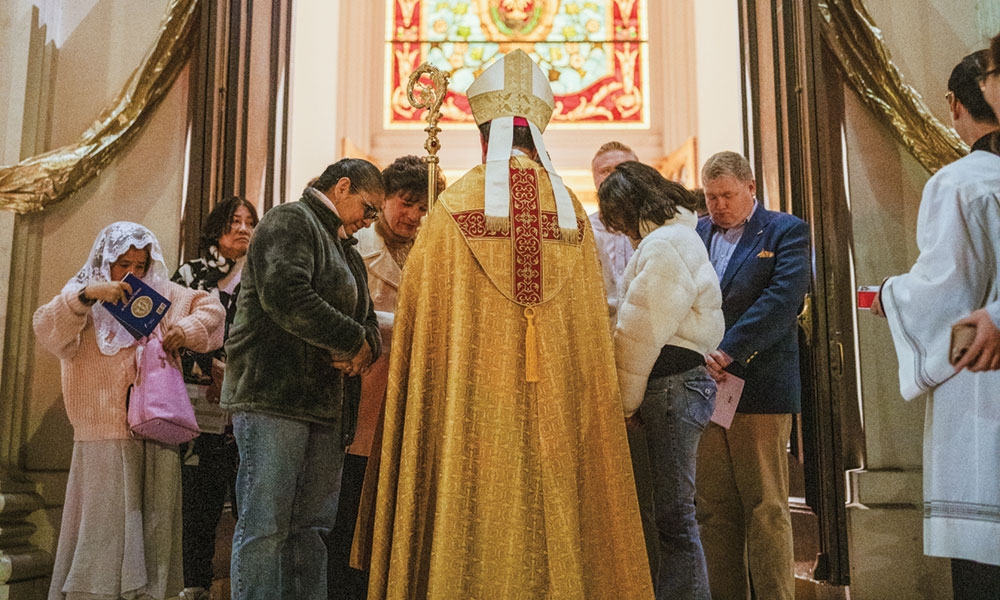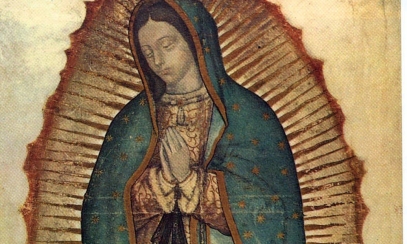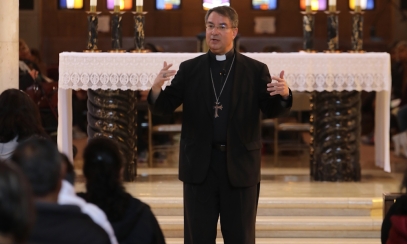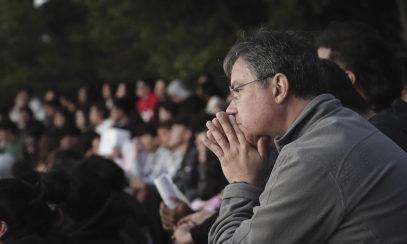
Active and Conscious Participation in the Eucharist
Dear brothers and sisters in Christ,
The Eucharist is at the heart of our faith. It manifests God’s deep love and redeeming action for the world, a sacred mystery that nourishes our hearts and strengthens us for the journey of life and faith. But for the Eucharist to shape our lives fully, we must enter into the mystery with intention and awareness of what is taking place in the rituals in which we participate.
Dear brothers and sisters in Christ,
The Eucharist is at the heart of our faith. It manifests God’s deep love and redeeming action for the world, a sacred mystery that nourishes our hearts and strengthens us for the journey of life and faith. But for the Eucharist to shape our lives fully, we must enter into the mystery with intention and awareness of what is taking place in the rituals in which we participate.
At the Second Vatican Council (1962-1965), the bishops from around the world discussed matters central to the life of the Church. They drafted and promulgated sixteen documents, including four constitutions, which, in the Church, carry the most weight of authority. One of these was Sacrosanctum Concilium, the Constitution on the Divine Liturgy, the results of their discernment on how the liturgy could better engage the faithful more fully in the profound and redeeming action of Christ in the liturgy.
Over the centuries, the Roman liturgy had become so embellished that it became a quasi-privatized ritual of the priest, relegating the assembly to passive observation and private prayers. The bishops discerned and decided to restore the Eucharistic rituals to the elegant simplicity of the early Church liturgies so that “devout and active participation by the faithful may be more easily achieved” (SC 50). The document explains:
“The Church, therefore, earnestly desires that Christ's faithful, when present at this mystery of faith, should not be there as strangers or silent spectators; on the contrary, through a good understanding of the rites and prayers they should take part in the sacred action conscious of what they are doing, with devotion and full collaboration” (SC 48, emphasis mine).
What does this mean for us today? Active participation in the Mass does not necessarily mean external activity, such as singing in the choir, reading at Mass, or some other liturgical ministry. While these liturgical ministries are valued and necessary, the bishops of Vatican II had something much more profound in mind. The constitution explains,
“They [Christ’s faithful] should be instructed by God's word and be nourished at the table of the Lord's body; they should give thanks to God; by offering the Immaculate Victim, not only through the hands of the priest, but also with him, they should learn also to offer themselves; through Christ the Mediator, they should be drawn day by day into ever more perfect union with God and with each other, so that finally God may be all in all” (SC 48).
As the quote explains, our interior participation, how we enter deeply into the mystery of the Eucharist, is essential. We must listen with open hearts as God speaks to us through Scripture and as expounded in the homily. We are to reflect on His word and let it shape our lives. We must be conscious that Christ has truly become present in the form of bread and wine to nourish and strengthen our souls, hearts, and minds. We must offer ourselves. When the bread and wine are presented on the altar for consecration, we realize that they (the bread and wine) represent us – our lives, our prayers, our work, our sacrifices, and our hopes, which we spiritually placed on the altar to be transformed along with the bread and wine and joined to the offering and sacrifice of Christ himself.
This is precisely what it means to participate consciously and actively in the liturgy, as we are drawn “into ever more perfect union with God and with each other” (SC 48).
As we prepare our hearts for Easter, I invite you to deepen your understanding of the mystery of the Eucharist. In the coming months, our diocese will provide opportunities for study, dialogue, and reflection – both in our parishes and at our second annual Diocesan Eucharistic Congress this fall. I encourage you to join these efforts so that we may be truly nourished by the sacred mysteries in which we participate.
Be assured of my prayers for you, especially at the Eucharist.



